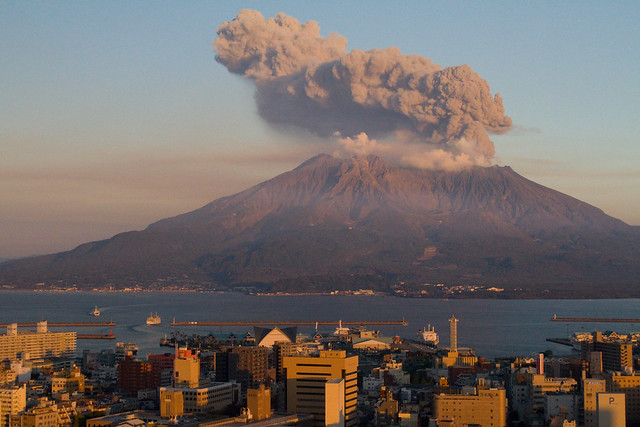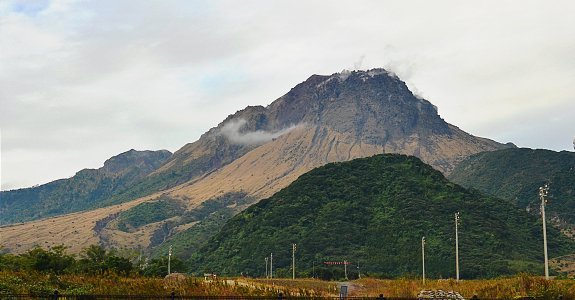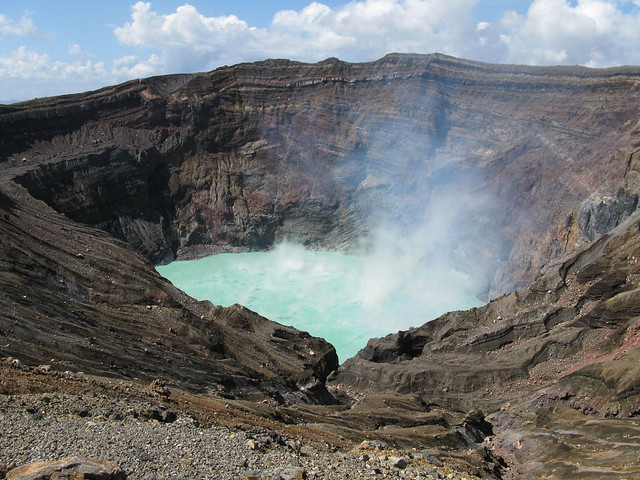From majestic Mount Fuji to an underwater volcano that formed a new island just last year, Japan’s 109 active volcanoes account for around 10 percent of all of the active volcanoes in the world. With more than 70 percent of Japan covered in mountainous terrain, it’s no surprise the country’s volcanoes play a significant roles in Japan’s culture and mythology. Whether viewing a smoldering volcano from a safe distance or scaling a dormant peak, the volcanoes in Japan offer awe-inspiring travel experiences.
5 Mount Asama

Located in the center of Japan’s main island of Honshu, Mount Asama stands 2,568 meters (8,425 feet) above sea level, towering over the resort town of Karuizawa. Mount Asama is best known for an eruption that occurred in 1783, which killed 1,500 people. The mountain is Honshu’s most active volcano, erupting as recently as 2009 and sending ash as far away as Tokyo. Despite the potential danger of another eruption, Mount Asama remains a popular holiday destination. Visitors come to ski on the peak’s adjacent slopes and soak in the region’s natural hot springs.
4 Sakurajima

Overlooking the historical city of Kagoshima on Kyushu Island are the three volcanoes that make up the stratovolcano Sakurajima. Of these, Minami-dake is the most recently active. It regularly dumps ash on the city below. Adventurous travelers who want an up-close experience with a live volcano are rarely disappointed. While visitors are not permitted to climb up to the edge of the dangerous crater, there are excellent views to be enjoyed from Yunohira Lookout, which can be reached in around two hours on foot or in minutes by car.
3 Mount Unzen

Near the city of Shimabara on the island of Kyushu lies the group of volcanoes known as Mount Unzen. Eruptions from these volcanoes date back six million years, but until recently, they were thought to have become dormant. A national park was established in 1934 and a small village sprang up to accommodate visitors. In 1990, one of the volcanoes, Mount Fugen, began a series of eruptions. Today, the mountain lies dormant again, and visitors can climb the 1,359 meter (4,459 foot) peak to enjoy panoramic views. To shorten the trek, most hikers approach the climb from Mount Myoken, which is reached by a three-minute gondola ride from Nita Pass.
2 Mount Aso

Mount Aso, or Aso-san, is actually five separate volcanic peaks. Located on Japan’s southern island of Kyushu near the city of Kumamoto, the Aso-san volcanic area is so massive that whole villages lie within its boundaries. One of the five volcanoes, Mount Nakadake, is still active and is the area’s main attraction, but when the volcano spews gases, the entire area is shut down. Other peaks are popular destinations as well. Treks around the region range from short walks to day-long hikes. Near the Mount Aso Museum is a heliport where visitors can arrange for breath-taking albeit expensive flyovers.
1 Mount Fuji

Located less than two hours from Tokyo, Mount Fuji is Japan’s most recognizable landmark, visited by millions and climbed by more than 300,000 people each year. Legend says that Mount Fuji was created in a single day; geologically, the current volcano is believed to have formed over the top of an older volcano around 10,000 years ago. The climb up Fuji is so popular there’s a post office at the top so that those who reach the summit can send a postcard back home from the crest of the 3,800 meter (12,400 foot) high peak. It’s a steep and arduous climb, however. Travelers looking for a less taxing experience can enjoy spectacular views of Fuji from nearby Tenjo-Yama Park where a cable car takes visitors 1,000 meter (3,000 feet) up to the Fuji Viewing Platform.
ไม่มีความคิดเห็น:
แสดงความคิดเห็น